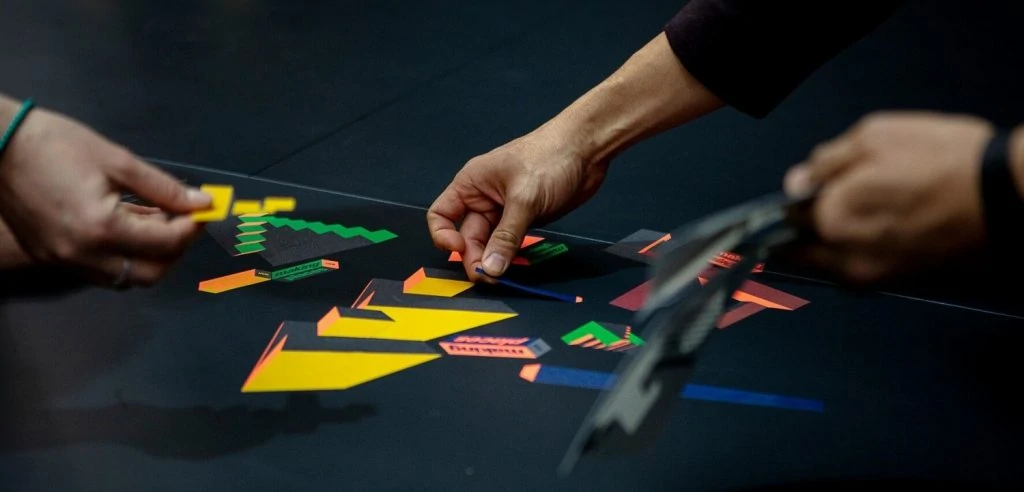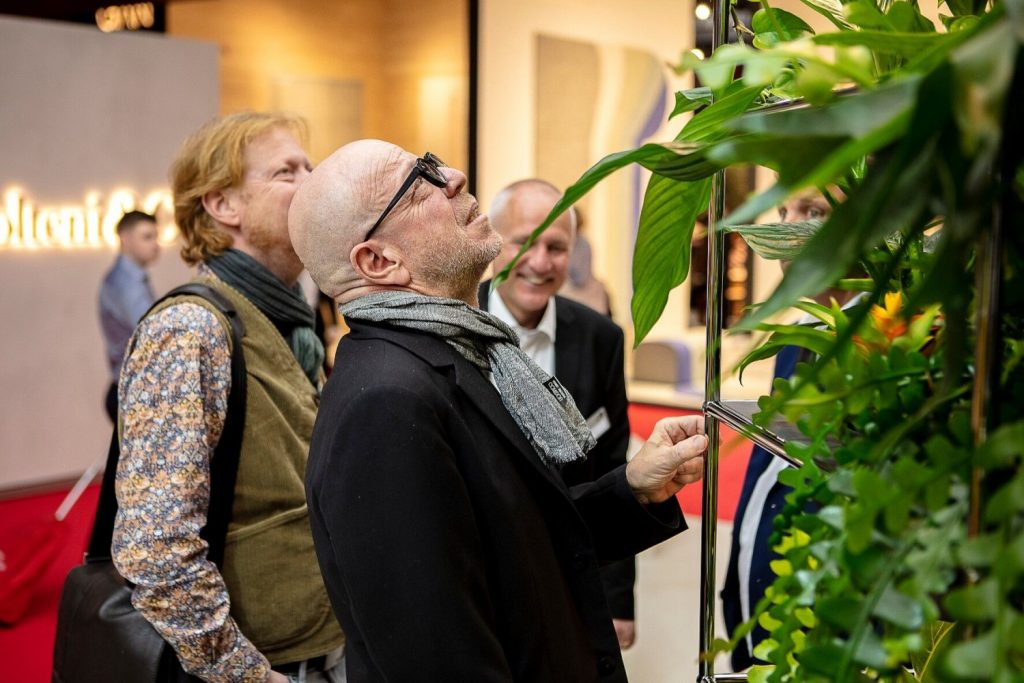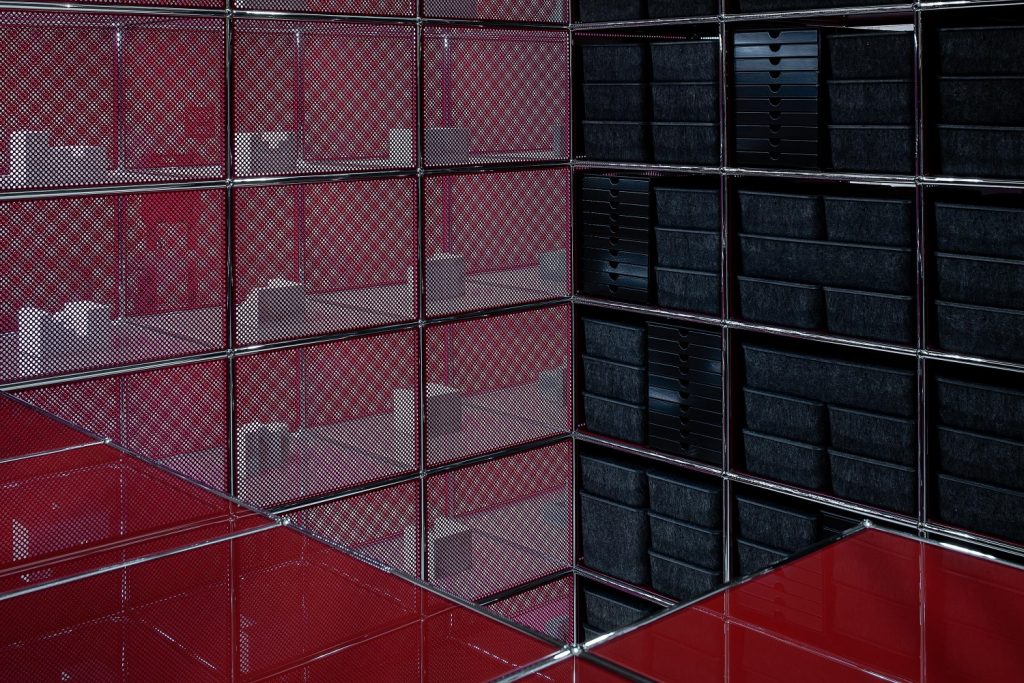USM at the Salone del Mobile in Milan
Where is the boundary between home and work today?
Over the past year USM and UNStudio have been looking for it. From building absurd domestic rooms for the PlayGround at Salone del Mobile in Milan to building scenarios at the WorkHouse in Berlin, they’ve identified the drivers which are changing the way people work and live today, in order to paint a clearer picture of the future.
What was surprising is that few people want to keep home and work separate. Work is more fun when we
choose where to carry it out – it gives us freedom and self-determination. As such a third space is emerging
between home and work – co-workspaces, cafes, hotel lobbies and libraries – where we work collectively
alongside people we don’t know.
While diverse in design, what these third spaces share is community. Being together with others is just as
important as getting the job done. The furnishings relax us and the ability to move between a variety of
zones keeps us motivated and engaged. In many ways these feel more like spaces of leisure; undetermined
and open to interpretation. More like a public square than an office or a living room.

At Salone del Mobile last year USM did their HomeWork. They asked visitors to tell them how they live and work.
This year they favour action – providing the ingredients for living and working on the booth and inviting visitors
to Make the Place with them. When they break free of typological associations – is this home or is it work? – they
can focus on simply providing the conditions for humans to thrive.

What might these conditions be? At the WorkHouse in Berlin USM identified four: growing, learning, reflecting
and meeting. At Salone del Mobile this year they plan to demonstrate how the USM Haller system can be used to
create these four conditions, by adding a few extra ingredients. From plants to acoustic privacy panels, a
mix of USM Haller and additional elements produces an enriched environment that stimulates the senses,
2offers novel objects for exploration, promotes social interactions, and provides spaces for the development
of skills.

Crucially, a successful third space is not created from the top down. It is a collective process; we make it
together. Visitors to the stand are invited to cover the stage with custom-made stickers. The design of the
stickers explores a new visual identity for USM, breaking free of the system’s classical geometry with a
playful perspective. Customisation brings a subversive energy to the space, an ingredient which will, with
any luck, break free of the stand and be used to Make Places elsewhere.

Visit the stand in hall 20, booth A06/A07.
Contact us for more information or images about any of the above. If you are in Milan this week and would like to catch up, contact Informare Founder Anna King or Director Cora Kemp who are in the city for the week.


